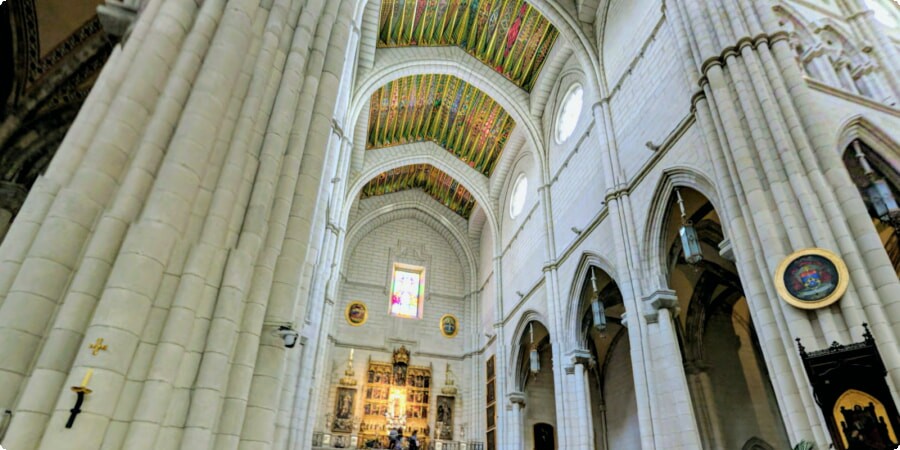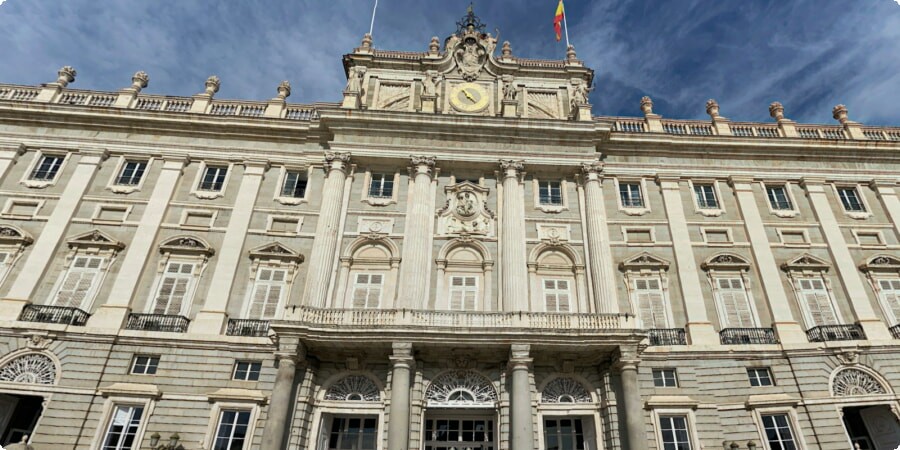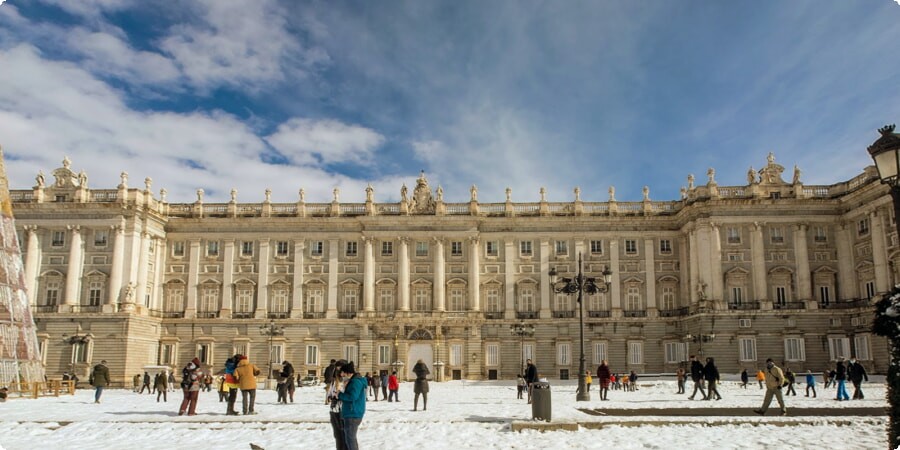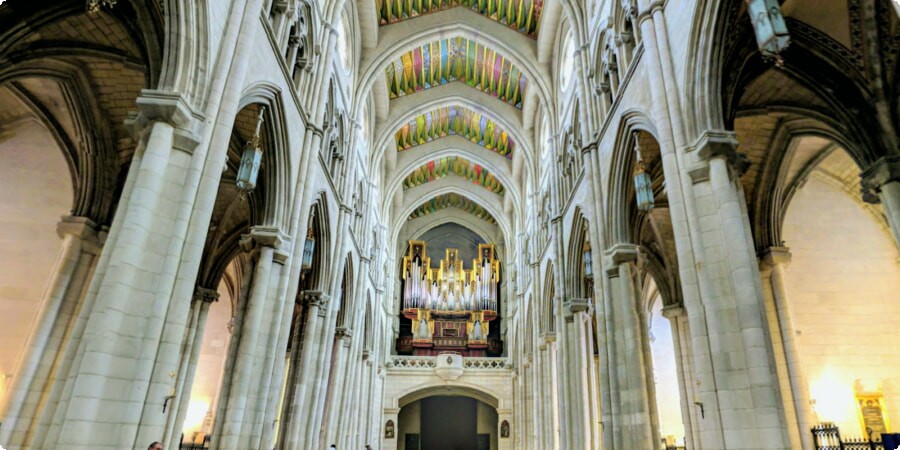The Architecture of Palacio Real: A Stunning Blend of Styles
Palacio Real, the Royal Palace of Madrid, stands as a magnificent testament to Spain’s rich history and architectural prowess. Nestled in the heart of the city, this grand structure is not only the official residence of the Spanish royal family but also a captivating site that draws millions of visitors each year. With its opulent design and intricate details, the palace encapsulates the essence of Spanish heritage, showcasing a harmonious blend of various architectural styles.
Historical Context
The origins of Palacio Real date back to the early 18th century when King Philip V decided to replace the old Alcázar of Madrid, which had been destroyed by fire in 1734. The construction began in 1738, led by architect Francisco Bautista de Toledo, and continued for several decades. Over the years, the palace underwent numerous modifications and expansions, reflecting the changing tastes and influences of each period. The result is a remarkable architectural narrative that spans centuries, capturing the evolution of Spanish architecture from Baroque to Neoclassical styles.

Architectural Styles: An Overview
Palacio Real is a stunning amalgamation of architectural styles, each contributing to its unique character. The predominant styles that define its architecture include:
-
Baroque: Characterized by grandeur and dramatic details, Baroque architecture flourished in the 17th and 18th centuries. Palacio Real showcases this style through its imposing facades and intricate ornamental designs.
-
Neoclassical: Emerging in the late 18th century, Neoclassicism emphasizes simplicity and symmetry, drawing inspiration from ancient Greek and Roman architecture. This influence is evident in several elements of the palace’s structure.
-
Rococo: A more decorative and playful style than Baroque, Rococo is reflected in the palace’s interior designs, showcasing elegance and intricate artistry.
Exploring these styles within the palace allows visitors to appreciate the diverse influences that have shaped its architectural identity over the years. For those planning to visit, understanding the architectural context enhances the overall experience, making it a truly enriching journey.
If you're planning a visit to Madrid and need convenient transportation, consider booking a car at Barcelona Airport for easy access to the city’s treasures, including the majestic Palacio Real.

Baroque Elements
Palacio Real is a prime example of Baroque architecture, a style that emerged in the 17th century and is renowned for its grandeur and ornate details. This influence is prominently visible in several features of the palace:
-
Imposing Facades: The grand facades of Palacio Real, adorned with intricate stonework and sculptures, create a powerful visual impact. The use of bold lines and elaborate decorations draws the eye and conveys a sense of royal authority.
-
Dramatic Interiors: Inside the palace, Baroque elements continue to shine through. The lavish halls and rooms are filled with opulent furnishings, gold leaf accents, and intricate frescoes that narrate historical and mythological tales, transporting visitors to a bygone era.
One of the best examples of Baroque splendor within the palace is the stunning Throne Room, where the rich decoration embodies the magnificence of the Spanish monarchy.
Neoclassical Influences
As architectural trends evolved, Neoclassicism began to influence the design of Palacio Real in the late 18th century. This style is characterized by its emphasis on symmetry and simplicity, inspired by the classical forms of ancient Greece and Rome. Key features include:
-
Symmetrical Layouts: The palace’s overall layout reflects Neoclassical principles, with well-proportioned rooms and harmonious arrangements that create a sense of balance and order.
-
Classical Columns and Pediments: Neoclassical elements are evident in the grand columns and pediments adorning various sections of the palace, reinforcing its dignified presence and historical significance.
The blend of Baroque and Neoclassical styles at Palacio Real creates a dynamic architectural dialogue, showcasing the evolution of artistic expression over time.

Modern Renovations and Additions
Throughout its history, Palacio Real has undergone several renovations and additions to maintain its grandeur and functionality. These updates have been crucial in preserving the palace’s architectural integrity while adapting to modern needs. Key points include:
-
Restoration Efforts: Various restoration projects have been undertaken to address wear and tear while retaining the original design elements. These efforts ensure that the palace remains a vibrant part of Madrid’s cultural landscape.
-
Contemporary Features: Some modern additions, while respectful of the palace's historical context, incorporate contemporary design elements that enhance visitor experience. This includes improved visitor facilities and enhanced accessibility.
For anyone interested in exploring the architectural richness of Spain, booking a car is a convenient option. Consider renting a vehicle through Cars Scanner to easily navigate the beautiful landscapes and historic sites across the country, including the majestic Palacio Real.
Notable Facades and Structures
Palacio Real features several remarkable facades and structures that contribute to its majestic presence in Madrid. Each facade tells a different story and showcases unique architectural details:
-
Main Facade: The grand entrance of the palace is adorned with intricate sculptures and majestic columns, creating an impressive first impression. This facade is a perfect blend of Baroque and Neoclassical elements, exemplifying the palace's architectural duality.
-
East Facade: This side of the palace overlooks the beautiful gardens and is characterized by its elegant symmetry. The large windows and decorative motifs invite natural light, enhancing the beauty of the architectural details.
-
Gabinete de Planos: A notable structure within the palace complex, this building houses historical maps and plans, reflecting the royal family's historical significance and their role in shaping Spain’s territorial landscape.
Each facade and structure within Palacio Real is meticulously crafted, embodying the palace's historical legacy and artistic brilliance.

The Interior Architecture
Stepping inside Palacio Real is like entering a world of opulence and artistic mastery. The interior architecture is equally as captivating as the exterior, featuring several iconic spaces:
-
The Throne Room: Perhaps the most iconic space in the palace, the Throne Room is adorned with lavish decor, including majestic chandeliers and intricate tapestries. It serves as a symbol of royal authority and is often used for official ceremonies.
-
Royal Apartments: The royal apartments showcase exquisite craftsmanship, with beautifully decorated rooms that reflect different historical periods. From the lavishly furnished sitting rooms to the stunningly decorated bedrooms, each space offers a glimpse into the lives of Spanish royalty.
-
The Hall of Ambassadors: This grand hall, used for official receptions, is adorned with striking frescoes and elegant columns. It is a prime example of the architectural grandeur that characterizes Palacio Real.
Visitors can truly immerse themselves in the rich history and artistic heritage encapsulated within the palace’s walls.
Visiting the Palace: What to Look For
When visiting Palacio Real, there are numerous architectural highlights to explore that make the experience unforgettable. Here are key points to keep in mind:
-
Take Your Time: Allocate sufficient time to wander through the various rooms and courtyards. Each area has its unique charm and historical significance, inviting you to discover its secrets.
-
Guided Tours: Consider joining a guided tour to gain deeper insights into the palace's history, architecture, and the fascinating stories behind its construction. Knowledgeable guides can provide context that enriches your visit.
-
Photography Opportunities: Don’t forget your camera! The stunning architecture and beautiful gardens offer endless opportunities for capturing memorable photos. Look for angles that showcase the grandeur of the palace and its intricate details.
Visiting Palacio Real is not just a stroll through a historical site; it’s an opportunity to connect with the rich architectural tapestry that defines Madrid's cultural landscape.